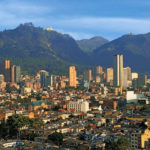What is altitude illness?
Altitude illness is a medical condition that occurs on a sudden ascent to a high altitude of more than 1500 meters. This condition can affect any person irrespective of the level of fitness. Usually, this condition is mild and does not require treatment. Depending on the organ involved, it presents as acute mountain sickness, high altitude pulmonary edema, and high altitude cerebral edema.
Acute mountain sickness: A person develops headache, malaise, or severe impairment within 24 hours of reaching a high altitude. These features may appear as early as 1 to 4 hours.
High altitude pulmonary edema: There is edema (swelling) in the lungs that occur within 1 to 4 days of reaching a high altitude.
High altitude cerebral edema: There is edema or swelling of the brain which may be fatal. This is the last stage of acute mountain sickness and occurs within 3 to 5 days of ascent to high altitude. Death may result from increased pressure in the head which causes brain herniation.
What are the risk factors for altitude illness?
Acclimatization at a lower altitude is normally recommended. Failure to acclimatize will cause problems. The rapid speed of ascent is related to the high risk of this illness. A gradual ascent will therefore pose a lesser risk. The higher the altitude of ascent, the higher is the risk. The duration of time spent at the high altitude adds to the discomfort. Any person with earlier experience of altitude illness is more likely to repeat the same illness.
How to prevent altitude illness?
Pre-acclimatization should be done to prevent altitude illness. The ascent should be staged with a period of rest after every 500 to 100 meters. The maximum ascent allowed every day should not exceed 600 meters. Adequate time should be spared for acclimatization. Heavy exertion should be avoided during the initial few days since the physiological changes take time to settle. Alcohol should be avoided as it causes respiratory depression. Drug prophylaxis is also effective. Nifedipine is useful for the prevention of high-altitude pulmonary oedema(edema). Other useful drugs are acetazolamide and dexamethasone.
What is the genesis of altitude illness?
Low atmospheric pressure and lack of oxygen are mainly responsible for the occurrence of altitude illness. Acute mountain sickness occurs due to swelling in the brain as a result of brain oedema(edema) and dilatation of blood vessels. The autoregulation of blood flow in the brain fails to result in the production of chemical mediators which increase the permeability of cerebral blood vessels. There is hypertension in the blood vessels of the lungs (pulmonary hypertension) which causes leakage of fluid and oedema(edema) in the lungs.
What are the symptoms of altitude illness?
The symptoms depend on the type of illness and are discussed below:
Acute mountain sickness: Headache, nausea, vomiting, dizziness, and inability to sleep. In severe cases, there is irritability, fatigue, and difficulty in breathing on exertion.
High altitude pulmonary edema: Cough, difficulty in breathing even at rest, weakness, tightness in the chest, and congestion.
High altitude cerebral edema: Abnormal behavior, lethargy, and altered level of consciousness.
What is the treatment of altitude illness?
These people require the following medical support when they develop the above symptoms:
- Oxygen inhalation is given as there is a lack of oxygen at high altitudes. It is inhaled at a rate of 2 to 15 liters per minute so as to achieve oxygen saturation of more than 90% in the arterial blood. This treatment is continued till there is an improvement of symptoms.
- Acetazolamide: This is a diuretic (increases flow of urine) and helps in the reduction of edema or swelling of the brain or lungs.
- Dexamethasone is a steroid and improves the symptoms of acute mountain sickness. It is also used for the prevention of brain edema.
- Nifedipine is a calcium channel blocker and reduces pressure in lung arteries. It is given in high-altitude pulmonary edema.
- General Measures: Early recognition helps in better response to treatment. The ascent should be immediately stopped. One should acclimatize at the same altitude or descend further if the symptoms do not improve.
People going for adventure activities and vacations to high altitudes should be aware of this condition. They should acclimatize properly. If there is any discomfort during the ascent, immediate medical help should be sought. The help of a guide or local support is a wise method to ensure safety.




























